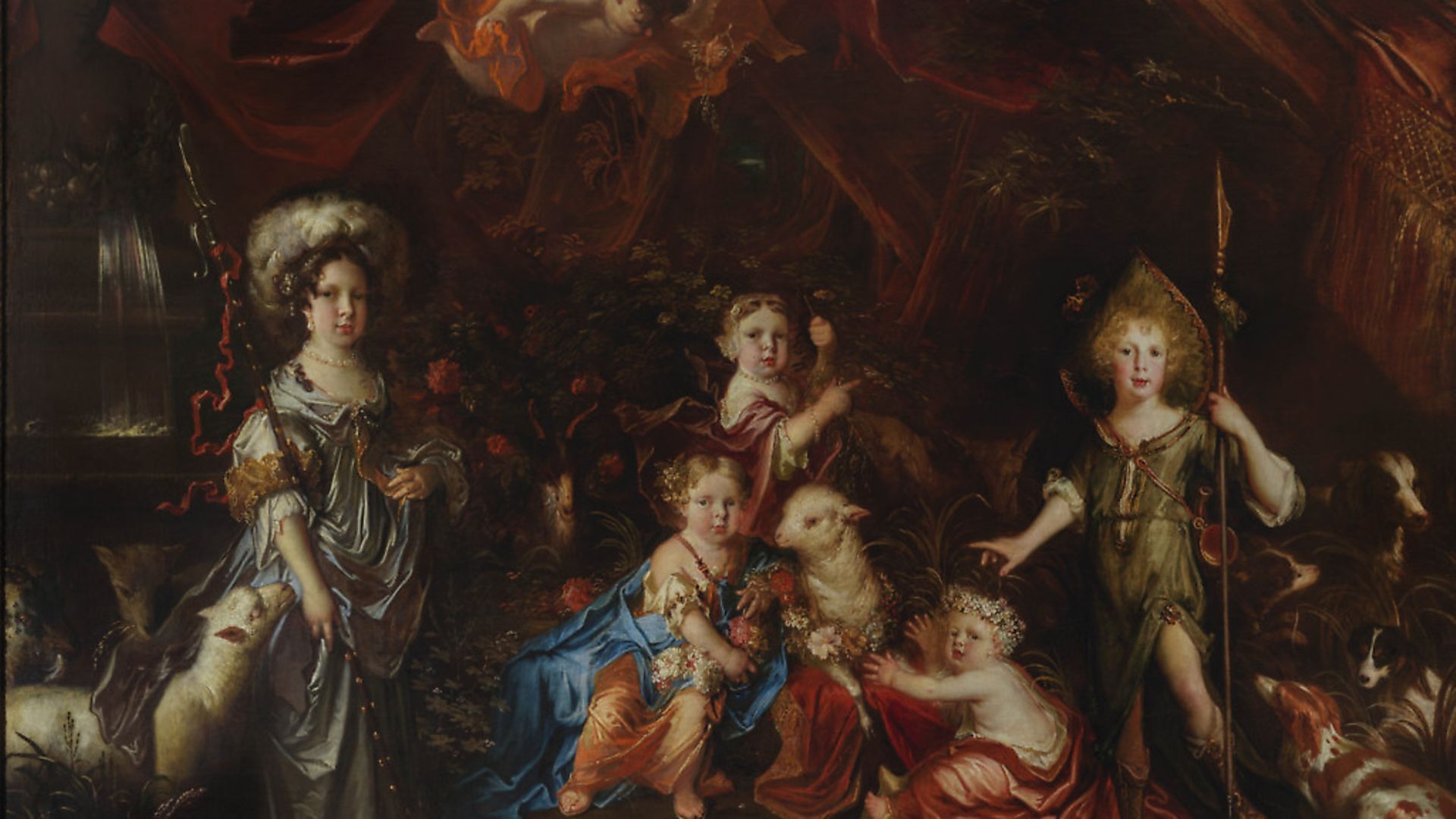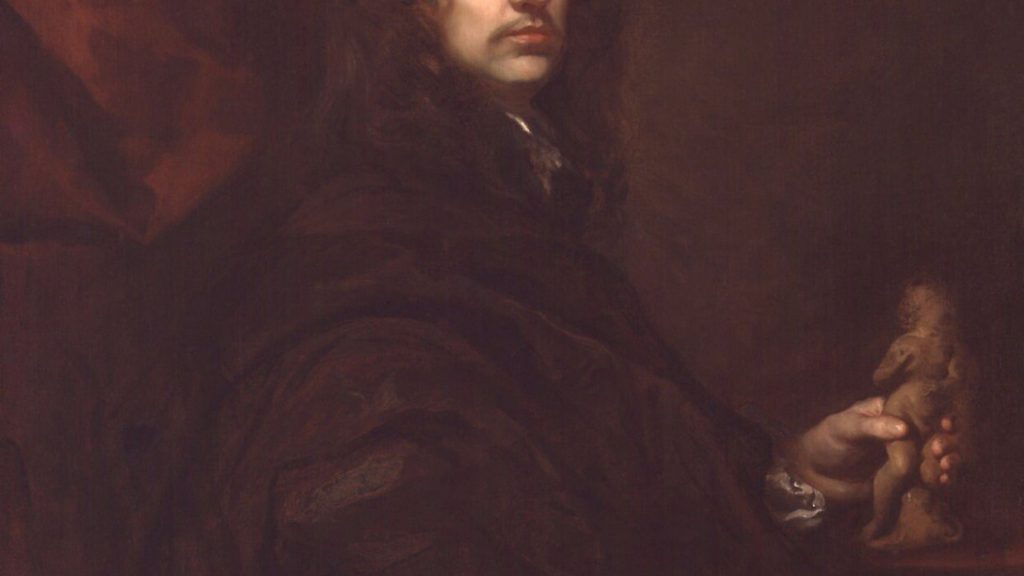
CLAUDIA PRITCHARD on a stunning new show of paintings from a moment in history when the country and its rulers were at their most self-aggrandising.

Upon the Restoration of the monarchy in 1660, and faced with the task of restating its majesty, Charles II appointed a spin doctor. The Lord Chamberlain, a role taken by a succession of aristocrats, was in charge of the Household above Stairs, and it was he and his staff who staged the ceremonies and displays of extravagance that established the restored king’s magnificence.
The visual arts were harnessed in this cause, no portrait too flattering, no decor too flamboyant, no personal ornament too lavish, no building too ambitious for this great personage. At home and abroad, Charles II – returned from exile on the continent – was to be beheld as wondrous.
For painters, sculptors and architects,whose work and influence the king had encountered on the mainland of Europe, it was a bonanza. And for today’s visitors to galleries and stately homes the almost comical exuberance of this explosion of excess prompts both admiration at the skill and amusement at this guileless display of self-aggrandisement.
A major show at Tate Britain examines the reign of Charles II and his immediate successors until the death of Anne in 1714, and looks in particular at the role of art in reinforcing power. In a striking parallel with today’s political elite, in British Baroque: Power and Illusion much is made of the tendency of the rich and powerful to pretend to be something they are not.
Charles, above all is elevated to nothing short of a god. In a bedroom ceiling painting by John Michael Wright he is Astraea, sharing joint billing with the goddess of justice.
For the maritime extravaganza that is Neapolitan Antonio Verrio’s The Sea Triumph of Charles II (c1674), he is a modern Neptune. In scaly armour, with glam rock curls and enthroned in a great shell, he is borne aloft by an eruption of horses, coronets, nymphs, and hangers-on, his mighty fleet in the background and angels at his luxuriantly coiffured head.
While an assortment of earls carried out the ceremonial duties as Lord Chamberlain, encouraging and enabling sumptuous ornamentation in private and official rooms, the king himself appointed the Dutch artist Peter Lely his official painter. In Lely’s 1664 portrait of the king’s favourite mistress, Charles is God: Barbara Palmer, Duchess of Cleveland is portrayed as the Madonna, her son by her royal lover, as the infant Christ.
Charles’s brother James, Duke of York, also liked to be rifle through the dressing-up box. Although he was another enthusiastic patron of Lely, he chose the French painter Henri Gascar to depict him as Mars, god of war (James was Lord High Admiral), armour at his sandalled feet, a helmet at the ready, battleships at sea.
While the menfolk were advertising their military and genetic supremacy, the women of the court favoured the pastoral look. Somewhat carelessly attired as shepherdesses, fondling their flock, or dangling their hands in water to signal purity, they appear in Arcadian landscapes that would, in their real lives become part of their hinterland, with ambitious upgradings of houses and gardens.
While Charles II held court at the Palace of Whitehall (lost to fire in 1698, bar Banqueting House), his Portuguese consort, Catherine of Braganza, kept her own household at Somerset House. For her own image consultant, she appointed the Catholic Flemish painter Jacob Huysmans.
Sitting for him, the queen semaphores docile benignity, creatures clustering around her unafraid, and piety, an angel in attendance. The piglet-faced children of Melbourne Hall, Derbyshire, are similarly attired as tiny warriors and shepherdesses, their adult roles assured.
This taste for artifice extended beyond the person to the interiors of the rapidly embellished houses and palaces. As Dutch artists with specialities poured into the country, there was an explosion of flower painting – every bloom in season at the same time – playfully virtuosic perspectival scenes and eye-tricking trompe l’oeil.
While there was an overlap with the genuine enquiry of scientists able to see microscopic detail better than ever, thanks to improved instruments, there was also fun to be had with the craze for optical illusions. The Dutch artist Samuel van Hoogstraten specialised in peepshows, the viewer peering in on teeny rooms in which furniture sprang into three dimensions. Van Hoogstraten straddled the arts and sciences, attending meetings and discussion dinners with members of the Royal Society (founded in 1662). One such in the Tate show saucily lets the spy see right through to the bedroom.
British-born artist Edward Collier, after training in Haarlem and working in Leiden, made a living from painting pinboards so lifelike that the viewer must look twice.
Perfecting certain curls of paper and 3D objects – a watch, comb, quill, sealing wax – he repeated these elements in constantly changing permutations.
But Jan van der Vaart’s violin and bow hanging on a door (after 1674), and loaned to the show by Chatsworth House – only the brass hook is real – is an example of trompe-l’oeil painting that to this day amazes.
Even conventional portraits were not exempt from interference. At Petworth House, Swedish painter Michael Dahl’s series of full-lengths of society women commissioned for the West Sussex mansion was considered an impediment by a later owner who in the 1820s installed Napoleonic war scenes below, cutting the so-called “Petworth Beauties” off at the knees.
It has since transpired that the legs were merely folded back, and now, for the first time in 200 years, these luxuriously swathed aristocrats tower once more.
Many of the works of art in this unashamed celebration of one particularly flamboyant period in Britain’s long love affair with Baroque excess are drawn from public collections and visitable stately homes such as Petworth. But rarely can we see them, particularly those in private houses or at Natonal Trust or English Heritage properties, hung so well lit or so low. Without the need to peer up above a cumbersome commode or across a roped-off room, there is a rare chance here to see properly the works of European artists attracted to Britain by the prospect of work and admiration.
It was Anthony van Dyck, too early for the remit of this show, who raised the bar for painting in Britain under Charles I. The Debrett’s Peerage in paint that followed owed much to him. But from one later portraitist, Godfrey Kneller, comes a sign of where art may go.
His psychologically forensic, loosely painted and arrestingly aesthetic portrait of poet and diplomat Matthew Prior seems, in the year 1700, to leap into the 19th century and beyond. It makes the Baroque, however excellent the craftsmanship, and the puffed-up personages that were in its grip, look vain, fatuous and overstuffed.










